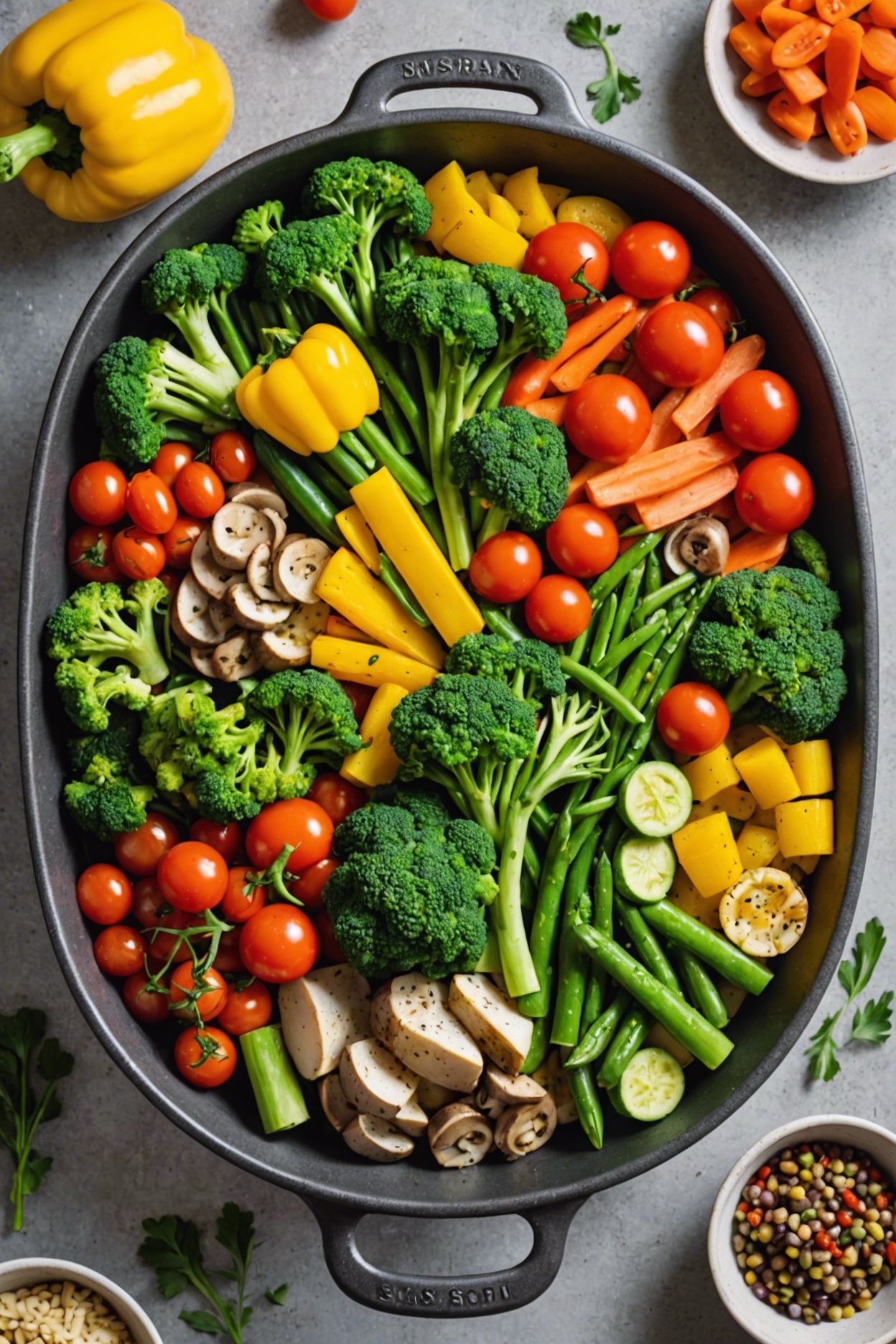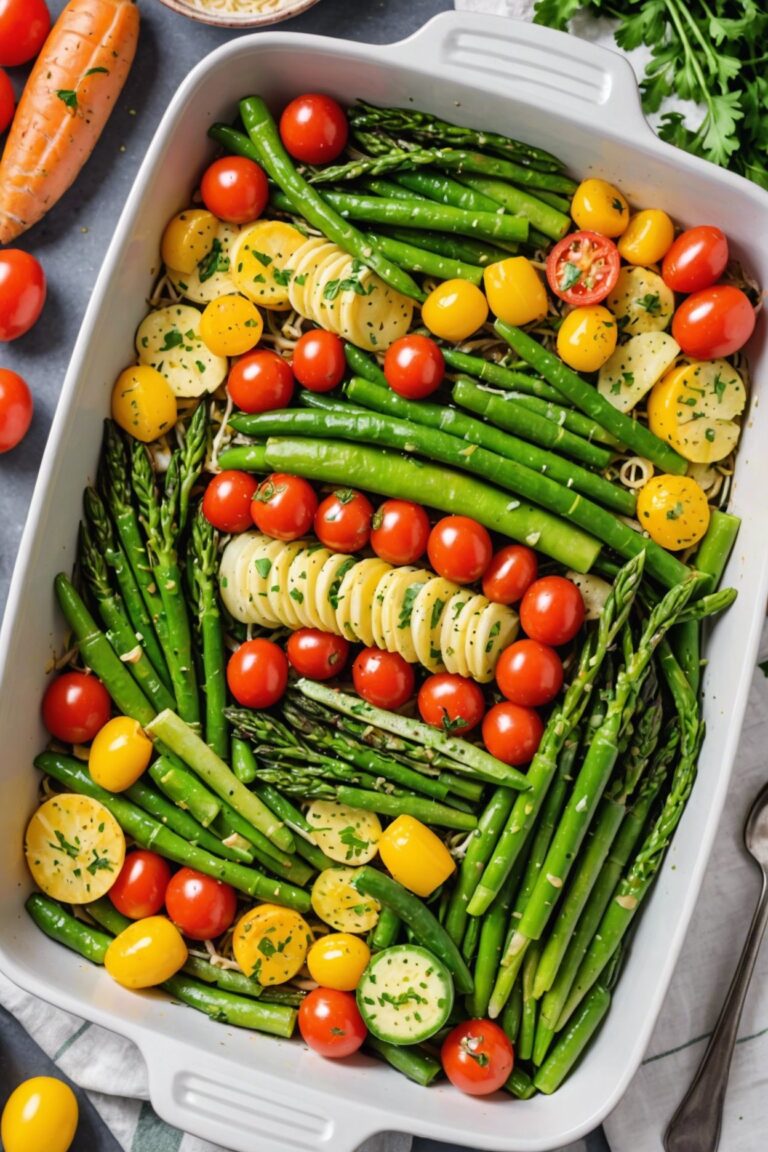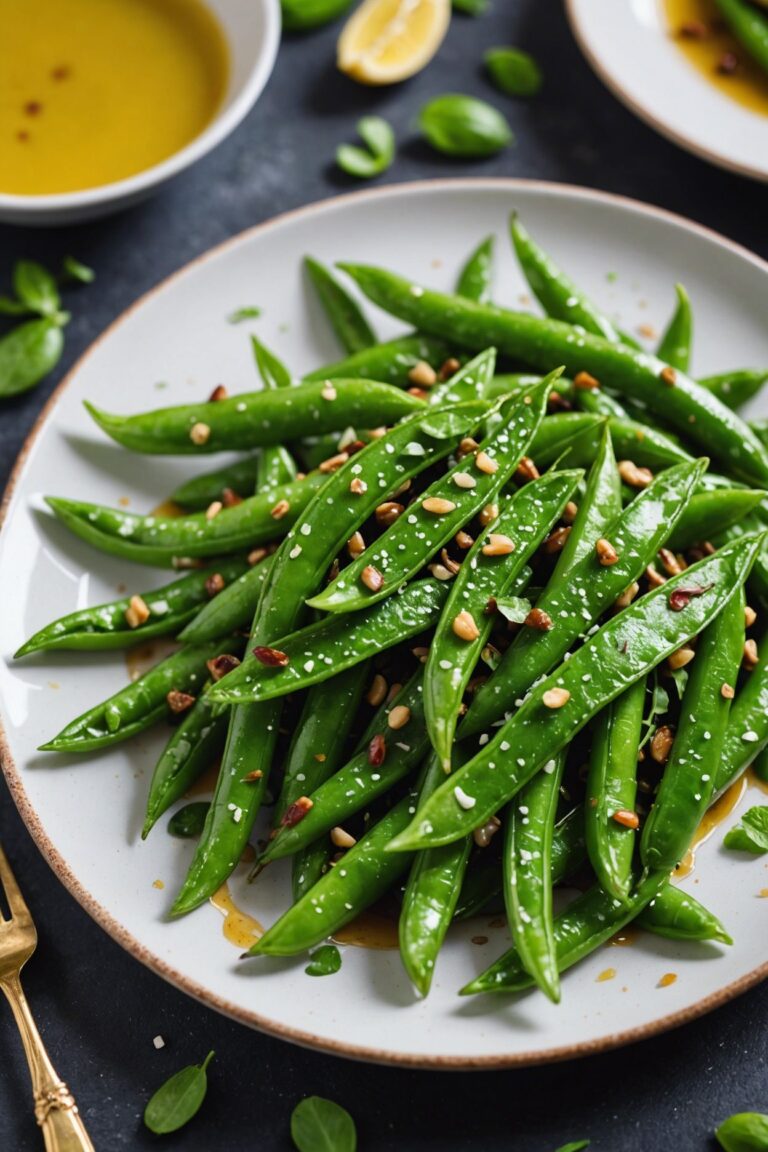My New Cookbook is Out! Check Out Now!
Steamed Vegetables
Steaming vegetables is a great way to preserve their nutrients and flavors, and this colorful medley of broccoli, carrots, zucchini, yellow squash, and red bell pepper is a tasty and healthy side dish that’s easy to prepare. Simply toss the veggies with olive oil, salt, and pepper, then steam them to tender-crisp perfection!
Ready Time
20 mins
Yields
6 servings
Ingredients
- 1 cup broccoli florets
- 1 cup sliced carrots
- 1 cup sliced zucchini
- 1 cup sliced yellow squash
- 1 cup sliced red bell pepper
- 2 cups mixed vegetables (such as green beans, sliced mushrooms, and cherry tomatoes)
- 2 tablespoons olive oil
- Salt and pepper to taste
Instructions
Rinse all the vegetables under cold running water, and pat them dry with paper towels to remove excess moisture.
In a large bowl, toss together the broccoli, carrots, zucchini, yellow squash, and red bell pepper to combine.
Add the mixed vegetables and toss again.
In a small bowl, whisk together the olive oil, salt, and pepper.
Pour the oil mixture over the vegetables and toss until they are evenly coated.
Place a steamer basket in a large pot with a tight-fitting lid.
Add 2 inches of water to the pot and bring to a boil over high heat.
Reduce the heat to medium-low, cover the pot, and place the vegetables in the steamer basket.
Steam the vegetables for 8-10 minutes, or until they are tender-crisp.
Serve hot, garnished with fresh herbs if desired.
Notes
This recipe is super versatile, so feel free to customize it with your favorite veggies or what’s in season. If you’re using frozen veggies, just thaw them first before using.
Make sure to dry those veggies thoroughly after rinsing, as excess moisture can make them steam unevenly.
And yes, it’s worth the extra effort to pat them dry – you’ll get a better texture in the end. For the mixed veggies, pick whatever you like – the more variety, the merrier! If using cherry tomatoes, you might want to halve or quarter them depending on their size.
When steaming, keep an eye on the water level to ensure it doesn’t boil away.
You want to maintain a gentle simmer, not a roaring boil. That way, your veggies will come out tender but still crisp.
Steaming time might vary depending on your veggie choices and your desired level of doneness.
Just check on them periodically and adjust the time as needed. And don’t forget to serve hot – it makes all the difference in the world!
Nutrional Value
- Calories: 54
- Total Fat: 2g
- Saturated Fat: 0g
- Cholesterol: 0mg
- Sodium: 50mg
- Total Carbohydrates: 11g
- Dietary Fiber: 4g
- Sugars: 4g
- Protein: 2g









